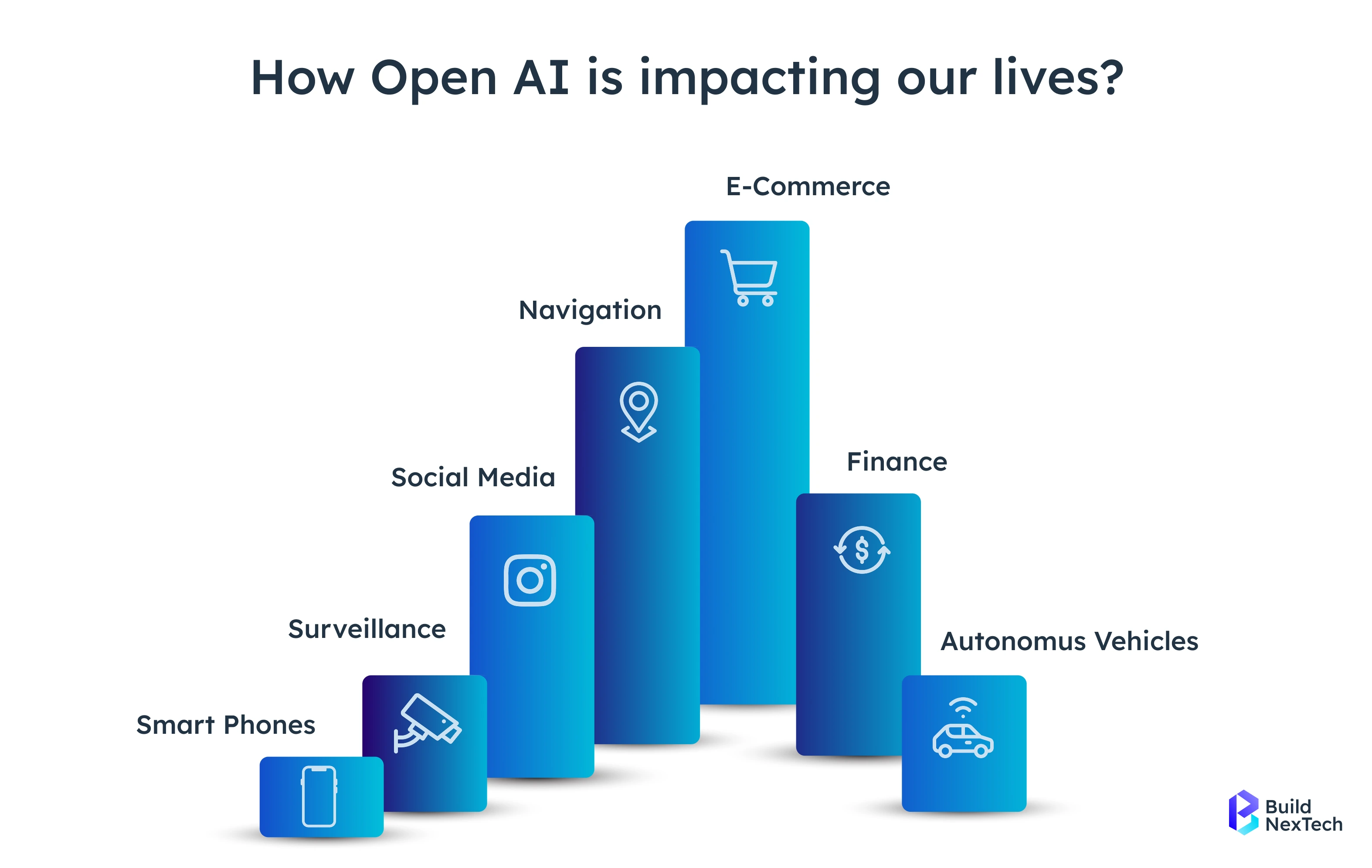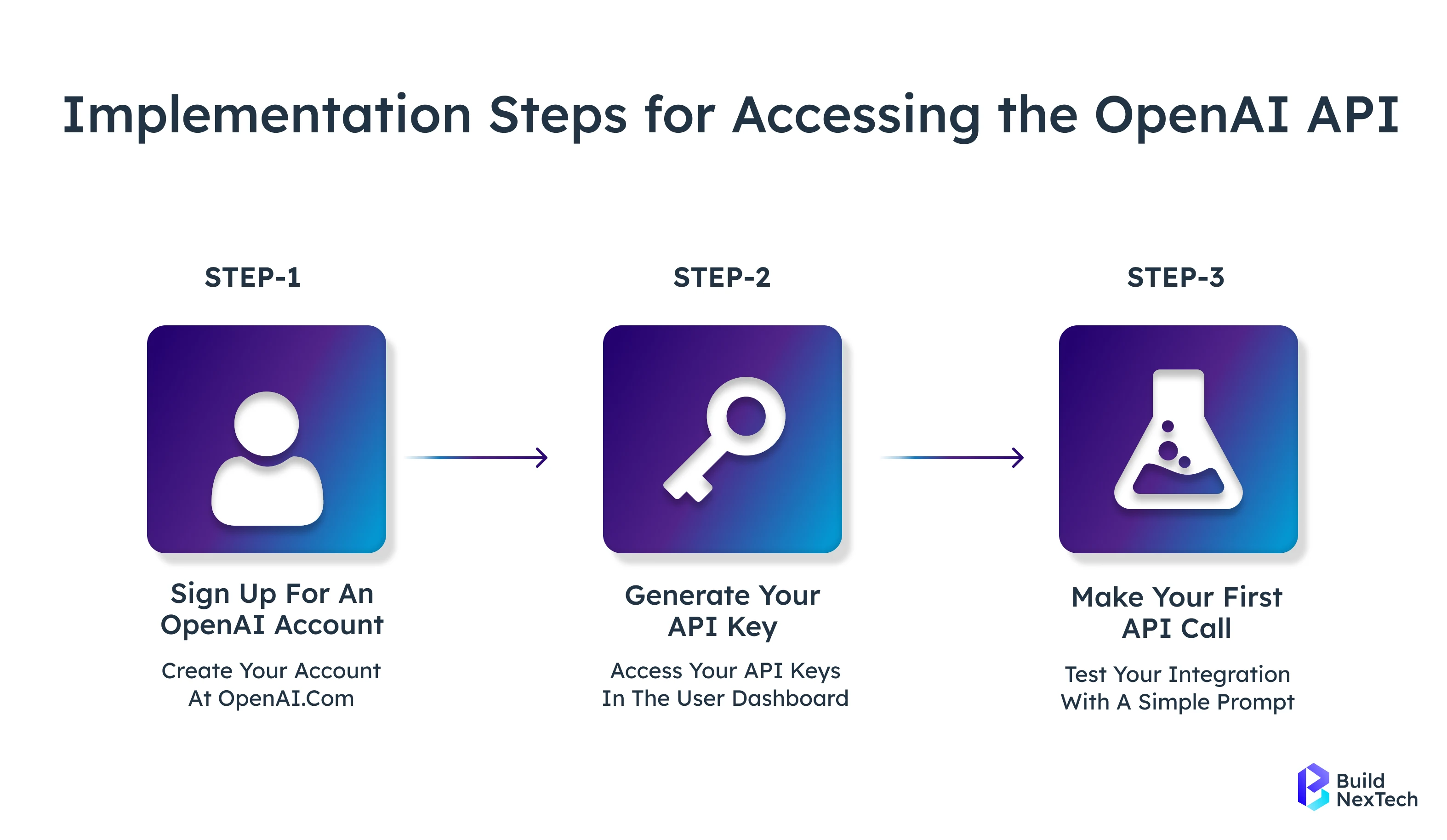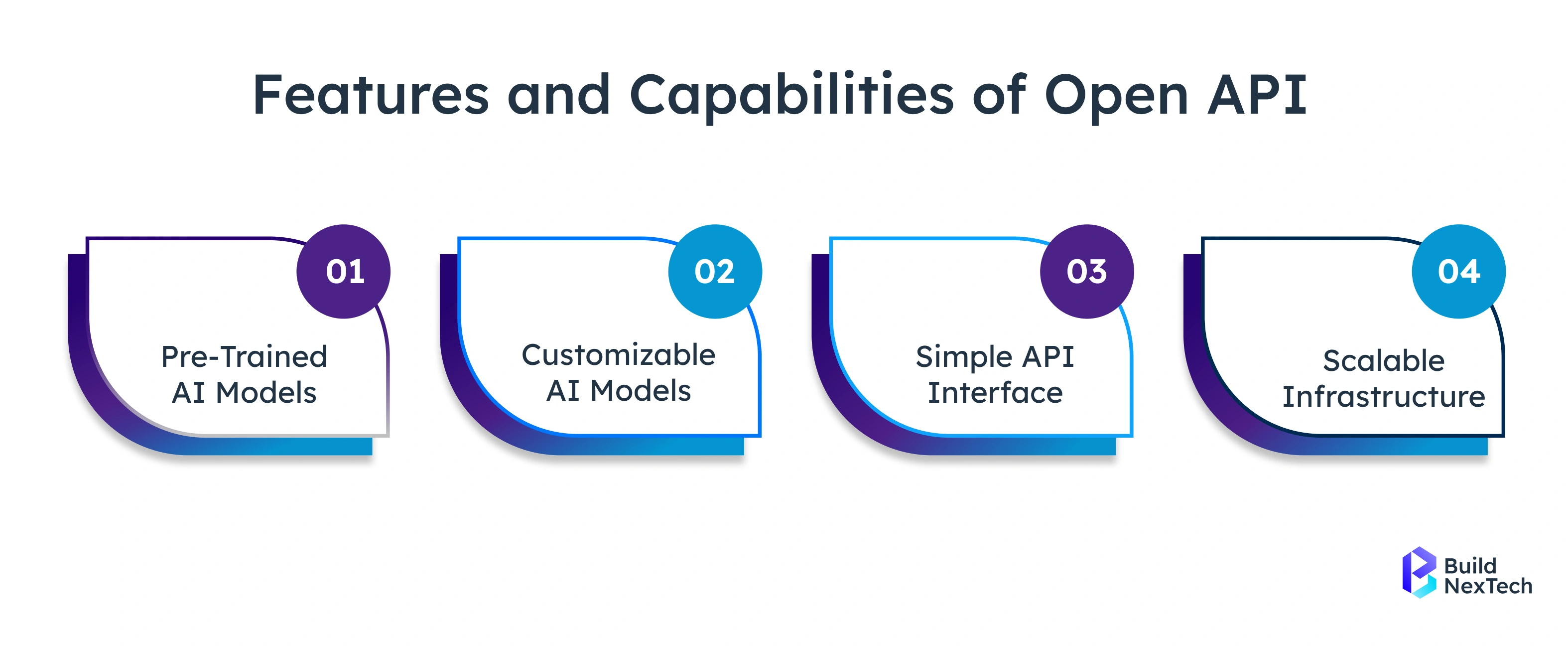The journey of Artificial Intelligence (AI) has gone from a mere theoretical concept to a daily application, and it has played a big part in our transformation in terms of work, learning, and communication. OpenAI, among others, is one of the pioneers of this transformation, being the main contributor to Generative AI developments such as ChatGPT and the OpenAI API.
AI development services, generative AI development services, and enterprise AI development services make use of these improvements to bring about automation, productivity, and innovation worldwide. Thanks to the breakthroughs made in large language models, deep learning, and machine learning. OpenAI has made smart systems accessible to everyone, and thus, productivity, creativity, and economic growth have been the result all around the world.
This article will consider the main points mentioned below:
- Recognizing OpenAI and Its Influence on Our Daily Lives – A review of how human-machine communication and daily activities have been altered by OpenAI technologies.
- Maximizing the Use of the OpenAI API – Sharing useful tips on the parts of the API that businesses and developers use for integration, automation, and innovation.
- Looking into ChatGPT and Its Applications – A thorough examination of ChatGPT's use cases in education, business, and creative areas.
- Advanced OpenAI Capabilities and Tools – A summary of the primary functionalities like Function Calling, Embeddings, Fine-tuning, and Text Classification.
- The Economic Impact of OpenAI – A discussion on OpenAI's economic power, market expansion, and the company's role in determining the future of AI-driven times.
Understanding OpenAI and Its Impact on Daily Life
OpenAI has created a new paradigm of human-technology interaction. The company's products, ranging from AI chatbots and virtual assistants to AI agents capable of doing tasks on behalf of humans, have greatly changed the workflows, communication, and problem-solving practices across the various sectors of the economy.
What is OpenAI?
OpenAI, the company that specializes in the research and deployment of cutting-edge artificial intelligence, strives to create AI systems that are human-enhancing rather than human-replacing. OpenAI, whose primary goal is to make artificial general intelligence (AGI) a blessing for mankind, has established a considerable variety of AI models and APIs that make machine intelligence available in our daily lives.
AI innovations like ChatGPT, DALL·E, Codex, and the OpenAI API not only show the ability of AI to reduce the time and efforts required for complex tasks, but also to take over the whole process and improve the output through better decision-making made possible by using AI. Using AI in education, customer support, and business automation are OpenAI's innovations that have successfully altered people's engagement with digital systems. As a result of AI software development services and AI application development services, companies have the chance to create personalized intelligent solutions that not only save time but also enhance creativity and yield productivity gains that can be measured.

Core Functionalities and Innovations Offered by OpenAI
OpenAI delivers AI tools that are flexible and scalable, and they are also capable of imitating human understanding. One of the products that are most popular products is ChatGPT, which uses the GPT-4 model and helps with various tasks, such as conversation-oriented dialogue, content generation, and productivity in the workplace.
The function calling feature allows the connection with other tools such as Google Drive and Microsoft Outlook, thus providing the creation of intelligent virtual assistants for businesses. Companies that provide AI chatbot development services or custom AI chatbot development services are the ones that predominantly take advantage of these capabilities to cater to business AI solutions of the highest quality.
Among the advantages that OpenAI offers are continuous access, the high-performance API, and considerable technical support to developers.
Using OpenAI API Efficiently
The API of OpenAI is an amazing tool that lets not only companies but also developers make the most out of OpenAI. The API usage makes it possible for the AI models to be integrated into applications, thus providing the users with automation, personalization, and saving time in different areas.
First Steps with OpenAI API
The first step to API access is to open ai get api key from the OpenAI platform. Along with the numerous resources made available, various open ai api tutorial videos can be found online for users to comprehend that clear parameters exist, like model type, temperature, and token limits. If best practices are followed, a wide range of applications can be rolled out by the developers, one of which is an AI chatbot that converses like a human, a data insight translator that summarizes reports, or even a privacy-preserving analysis of company records. This ensures you know exactly how to use open ai api efficiently.
API Limitations Management
OpenAI provides endless possibilities, but knowing the limitations of the API access is very important. The Open AI rate limits division of the usage around the world, so that it is balanced, and no more than a million daily requests are made. In case of problems with the connection, users can verify via the official status dashboard whether the open ai api is down. During such downtimes, the developers commonly resort to fallback AI automation tools or cached models to keep the business running.

Exploring ChatGPT and Its Use Cases
ChatGPT has ushered in a new era of human-machine communication, where interactions with AI are regarded as human-like, wise, and accommodating. Its adaptability has made it an indispensable asset in different sectors, including but not limited to education, marketing, gaming, and corporate productivity.
By means of context comprehension, summarization of content, and coherent response generation, ChatGPT has not only served to users’ experience but also to digital interactions that are more intelligent. The range of ChatGPT applications is still growing, and its use in education, personal, or enterprise contexts is just a matter of choosing the right one among many.
Key ChatGPT Use Cases
- Education and Learning Support:
Probably the most influential use is the one where ChatGPT for student's companion. It is a great help in the learning process by clarifying the mundane, providing a tutor, and helping with drafts and revisions. It not only guides students in creating their own ideas but also teaches them by improving the writing quality of their essays.
- Content Creation and Automation:
ChatGPT is often said to be an author of blog posts, essays, and marketing copy, as well as social media content. The power of its natural language processing enables users to carry out their writing tasks in a less monotonous manner, thus achieving a higher level of efficiency while keeping the creative aspect at the top of the content workflows.
- Customer Support and Virtual Assistance:
Chatbot manufacturers and companies creating virtual assistants in the line of customer inquiries often combine powerful AI with artificial intelligence development services to improve the quality of service through the use of chatbots.
- Personal and Professional Productivity:
Drafting of e-mails, summarization of meetings, brainstorming, and workflow automation are just a few things ChatGPT is used for by professionals. It is a great help in making the most of one’s time and perfectly balancing the process of making a decision by quickly feeding AI-generated insights.
Enhancing ChatGPT Performance with Plugins and Prompts
- ChatGPT plugins significantly improve the capabilities of this virtual assistant by making it operate with different external tools, for instance, Google Drive, Microsoft Outlook, and even real-time analytics platforms, via integration.
- The ChatGPT prompt generator serves as a perfect tool for users to enhance their queries. It does so by helping to create more precise, contextually relevant, and high-quality answers for various tasks.
Considering ChatGPT Alternatives
The existence of various ChatGPT alternatives, which include Claude, Gemini, and Perplexity, the GPT-4 model from OpenAI still holds the title of the industry standard because of its excellent contextual reasoning, precision, and versatility in different domains, among other reasons.
Diverse Applications of ChatGPT
From drafting essays and automating writing activities to supporting customer service, ChatGPT adapts to countless roles. In education, it acts as a tutor, simplifying complex topics for students. In business, it powers marketing campaigns, AI video scripting, and personalized communication. According to the National Bureau of Economic Research, such tools are driving significant workplace transformation and measurable productivity growth.
Enhancing ChatGPT with Plugins
The emergence of ChatGPT plugins made it possible for the assistant to provide all sorts of services, such as accessing real-time information, analyzing data, and integrating with Google Drive or Microsoft Outlook. The ChatGPT prompt generator is a tool that aids users in creating better queries, which, in turn, leads to refined and context-aware outputs. For the newcomers in the market, AI chatbots such as Claude and Gemini provide different methods, but still, OpenAI's GPT-4 remains the industry standard.
Transformative OpenAI Features Driving Everyday Productivity
OpenAI’s advancements extend far beyond conversations—they are now deeply woven into daily work and personal tasks. From automating workflows and generating code to enhancing search accuracy and powering smart assistants, Open AI tools are transforming how people interact with information and perform routine activities. These technologies are now essential in boosting efficiency, creativity, and decision-making across industries.
Code Generation & Data Transformation
OpenAI’s code generation capabilities, powered by models like Codex, make programming accessible to both developers and non-technical professionals. Users can now automate repetitive coding tasks, build scripts for data management, and transform raw data into structured insights with minimal effort.
In daily life, this means faster report creation, smoother database handling, and even automating spreadsheet processes—reducing manual errors and freeing up time for strategic work.
Embeddings & Semantic Search
Embeddings convert words and sentences into numerical representations, enabling AI systems to understand context and meaning. This power fuels semantic search—helping users find the right documents, emails, or knowledge base articles even when they don’t remember exact keywords.
For everyday users, embeddings simplify knowledge management, improve chatbot responses, enhance e-learning platforms, and create intuitive customer support portals that truly “understand” the query.
Fine-Tuning & Custom Models
Fine-tuning allows businesses and individuals to personalize AI models to align with specific goals, tones, and brand values. These tailored models improve the accuracy of recommendations, automate writing tasks, and maintain consistent communication styles.
In real-world applications, this means companies can train chatbots that speak in their unique brand voice or create AI assistants that understand niche terminology—improving both productivity and user experience.
Autonomous AI Agents & Workflow Automation
By combining embeddings, fine-tuning, and API integrations, OpenAI enables the creation of intelligent AI agents that manage workflows end-to-end. These agents can handle bookings, track progress, generate reports, and optimize marketing tasks automatically.
In daily operations, such automation reduces human workload, allowing professionals to focus on creativity, strategy, and innovation rather than repetitive administrative duties.
API & Service Status Management
With API and service monitoring, users can easily track OpenAI performance, uptime, and billing through the Open AI status page. Businesses relying on AI-driven workflows benefit from real-time visibility into API health, ensuring smooth and uninterrupted operations—essential for maintaining consistent productivity.
For uninterrupted operations, keep track of Open AI server status, Open AI api down, Open AI issues, Open AI support, the Open AI status page, and Open AI billing.
Additional Applications
OpenAI’s flexible ecosystem extends to everyday creative and educational uses—writing essays, generating learning content, or creating customized ChatGPT plugins. These enhancements amplify productivity by turning ordinary tasks like research, writing, and data entry into intelligent, time-saving processes. Open AI write essay on teaching methods.
Open AI ChatGPT plugins and Open AI plugin amplify, instead of mere functionality and integrations.

The Business Side of Open AI
AI is the main driver of change in the global economy, and OpenAI’s role is not just technological; it is a major change-maker across all areas of industry, workers, and labor market outcomes.
Pros of OpenAI Use
- Businesses gain Open AI benefits such as increased productivity and operational efficiency.
- ChatGPT provides aid in wise selections, machine learning, and enhanced learning within organizations.
- Daily chores are performed automatically, thereby saving time and cutting down costs.
- More employee training opportunities and on-the-job learning are created.
- Faster insights are provided, which prompt better business decisions.
OpenAI’s Market Position and Future Projection
- OpenAI has been acknowledged as a major global AI player, increasing its Open AI value and influence.
- Investors' confidence is rising, which is bringing Open AI revenue and the possible growth of Open AI company stocks.
- It is a great factor in the changing of technology, the economy, and the labor market.
- It is a major company in the field of innovations of advanced models, which are the ones that will drive AI solutions for business of the future.
Conclusion
OpenAI is indeed a leader in the development of artificial intelligence, but it has also become a major part of modern society and, to a greater extent, educational and creative processes. The wide array of OpenAI's offerings—from Generative AI tools like ChatGPT and DALL·E to AI agents working independently that make organizations more efficient—are signs of the fusion between innovation and accessibility.
The impact is so vast that the individual time savings are not only to such a small extent but also from the market productivity Increase and so on, significantly altering both labor market trends and the overall economy. In the midst of AI's rapid development, OpenAI has the responsibility to ensure that human values, through the areas of responsible deployment, data governance, and privacy-preserving analyses, are aspects of technological progress.
The future is a scenario where the AI models are not considered as a substitute but rather a partner—facilitating humans' discovery of creativity, insight, and purpose. No matter if you are a student, a developer, or a business executive, using the tools of OpenAI today means living through the next installment of the industrial revolution—one that is driven by intelligence, creativity, and innovation.
People Also Ask
What are the key characteristics of ChatGPT?
ChatGPT enables people and companies to engage in natural conversations via AI, draft texts, summarize, and do task-oriented interactions.
What should I do in case the OpenAI API is not working?
Look at the OpenAI status page and apply offline or cached solutions to keep your workflow going.
What are the good sides of OpenAI in the business world?
The use of OpenAI means higher productivity, less manual work, and better service to customers, among others.
How does OpenAI support and contribute to daily business operations?
By unburdening the workers and giving them virtual assistants, the company can save time over the entire range of activities.


























.webp)
.webp)
.webp)

